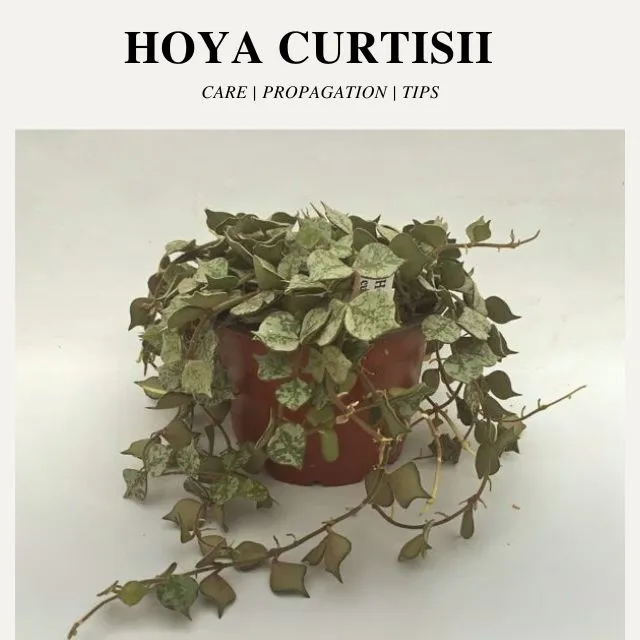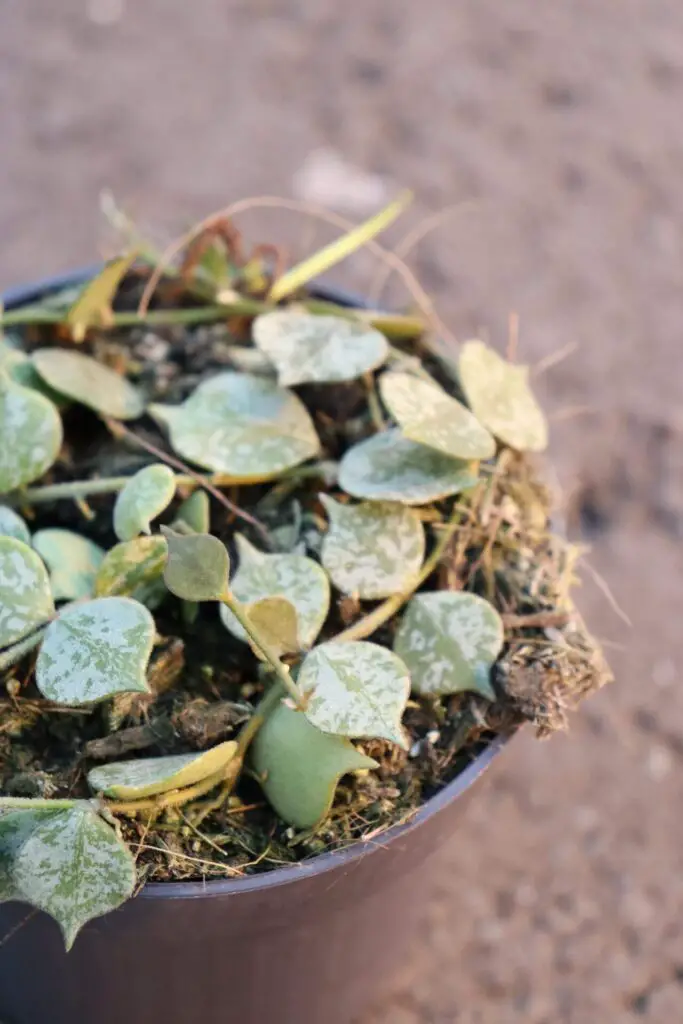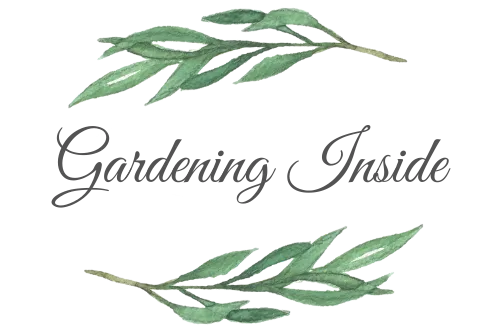Hoya Curtisii is a rich, exceptionally collectible hoya with minuscule, spade-molded leaves that are olive-green in variety, mottled with sprinkles of silver-blue variegation. Hoya curtisii is impeccably appropriate for a regular pot or hanging basket.
Hoya curtisii is exceptionally simple to focus on as long as you keep it in a splendid spot and are cautious with water. In the same way as other different sorts of Hoya’s, this species is epiphytic, implying it’s an air plant with creased succulent leaves. Hoyas can be propagated by cuttings, a sphagnum greenery medium, high humidity, and some tolerance.
They make for brilliant houseplants as they can endure disregard.

Characteristics of Hoya Curtisii
Hoya curtisii is a slow-growing perennial vine with small thick succulent olive green leaves. The plant has fragrant, unusual flower clusters.
The lovely, small leaves look like a spade and have stunning variegation.
The fragrant, strange blossoms fill in bunches and are ordinarily red with yellow focuses. The scientific characteristics of Hoya are as follows.
| Scientific Name | Hoya Curtisii |
| Family | Apocynaceae |
| Genus | Hoya |
| Habitat | Philippines, Malaysia, and Thailand |
| Growth Habitat | Slow-growing perennial vine |
| Common Names | Tiny-leaf Porcelain Flower Hoya, Wax plant, Miniature vine, Hoya Aloha, Porcelain flower, Fung waxflower, Hoya Plant, |
The most common varieties of hoya plants include:
- Hoya CarnosaHoya Kerrii
- Hoya Krimson Queen
- Hoya Polyneura
- Hoya Obovata
- Hoya Australis
- Hoya Curtisii
Hoya Curtisii Complete Care guide
Light Requirements
Hoya curtisii requires ample indirect sunlight to thrive.
If the plant location does not have suitable natural lighting, artificial glow lights can be used to maintain proper lighting.
Temperature Requirements
Hoya curtisii loves warmth. Maintain temperature 59-82°F (15-28°C) for best growth.
Humidity Requirements
For the best growth of Hoya Curtisii, the humidity should be maintained above 50%.
The optimized humidity range is between 50-60%.
Watering Requirements
Hoya curtisii plants are opportunistic water absorbers. Hoya plants prefer to be watered thoroughly but occasionally and allowed to dry out somewhat between watering.
Before watering, check if the top 1 – 2 inches of soil is dried. Overwatering is one of the most common causes of plant death.
Soil and Fertilizer Requirements
Hoyas are epiphytes in nature, so they require well-draining soil with a neutral pH of 6.8-7.2. A mix of equal parts soil, perlite, and orchid bark can be used to flourish your plant.
Fertilize your Hoya once a month with diluted organic fertilizer during the spring and summer. Use a fertilizer high in potassium to encourage the plants to bloom.
Pruning Hoya Curtisii
Grooming the plant is good for the growth of the plant. Prune your Hoya Curtissi using sterilized gardening tools whenever required.
Pruning can be done to remove damaged leaves or to maintain desired plant shape.
Healthy cuttings from pruning can be used to propagate new plants.
Repotting Hoya Curtisii
Hoya curtisii flourishes being only a tad root-bound. If the plant requires repotting, report it in the growing season- spring or early summer.
It is essential to utilize a pot that is “one size” up from your plant’s current pot. Using a pot that is too huge may appear to be a work-saver, keeping you from being required to report again soon.
However, it can mean the dirt doesn’t dry out rapidly enough and cause growth, shape, and root decay issues.
Also Read: Hoya Retusa Care & Propagation Guide | Grass Leafed Hoya

Step by Step Hoya curtisii Propagation
Hoya curtisii can be easily propagated with different methods.
Propagation by Cuttings
Cuttings from Hoya can be rooted in the soil just like other plants.
- To propagate, cut a stem with few nodes and leaves from the healthy plant.
- Remove leaves near the base but do not remove the air root structure.
- Make sure the stem has at least two leaves. Excessive leaves can dry out, and the cutting may die before development.
- Fill a pot with the soil blend, ensuring proper drainage and aeration.
- Delicately embed the cutting into the medium, ensuring that something like one set of air roots is covered with soil.
- While holding the cutting set up, water the compartment thoroughly. Push your thumbs or fingers gently into the highest point of the dirt blend to crush out any overabundance of water and settle the cutting against the dirt.
- Keep your cutting in direct daylight, in a warm spot. If your space isn’t damp, misting your cuttings will assist with keeping them from drying out.
Propagation by Layering
Maybe one of the simplest ways of engendering one more plant from your Hoya. Layering exploits this air plant’s regular craving to stick and establish in the tree covering or branch where it resides. Behind most arrangements of leaves is a hub that has two or three air roots.
- To layer, leave the stem connected to the mother plant, don’t cut it.
- Fill one more pot or compartment with a reasonable soil blend and dampen it well.
- Lay the stem from the mother plant across the dirt surface of the new pot and press it gently against the surface to connect. Ensure that the hub stays in the soil and doesn’t pull away when you let go of the plant. Be mindful so as not to break those little air roots.
- Keep the plant in great light and appropriate humidity, and follow the typical watering plan. In half a month, the hub should have joined and begun establishing. When it is deeply grounded, it tends to be isolated from the mother plant.
Also Read: Complete Hoya Macrophylla Care Guide with Pro Tips
Common Problems and Solutions
Yellow leaves
Yellowing leaves which drop off are a typical issue of Hoya curtisii. The reason behind this problem is overwatering. Overwatering may also cause leaves wilting, making you think the plant is dry and water more.
However, if wilting is caused by overwatering, the leaves will be fleshy and delicate. On the other hand, wilted leaves due to underwatering will be drier and brittle.
Root rot
Overwatering and poor drainage are the main reasons for root rot in Hoya Curtisii. Don’t rely on the look of the soil surface. Always check the top 2-3 inches of soil before watering.
Pests
Spider mites, mealy bugs, aphids, and spider gnats are the pests that may infect and hurt your Hoya Curtisii.
Spider mites can eventually kill your plant by drinking its sap. If you see little webs on your plant leaves or stems, wash them off with cold water and spray neem oil.
Aphids are a common infestation in houseplants. They can also be treated with neem oil. But first them off of your plant.
White spots on the base of your hoya leaves are mealybugs. The plant infested with mealybugs may start to lose leaves, or the leaves may turn wilted and yellow. Cut off the infected stem and spray your plant with neem oil.
Poor drainage and overwatering can result in the plant being infected by fungus gnats. These gnats lay eggs in moist soil. Keep the soil bit dry and use sticky card traps to eliminate these pests.
Conclusion
Hoya curtisii is an extraordinary plant for the people who need an easy to care for houseplant and might battle a piece with houseplants. Sprawling foliage with variegated leaves and beautiful blossoms adds to its allure.
To care for Hoya Curtisii, make sure it has excellent drainage, the proper soil, a nice warm surrounding with a maximum of 28oC temperature, plenty of indirect sunlight, mist it if your space has humidity lower than 50%, and you should be rewarded with a happy, beautiful plant.
Happy Gardening!!!
Frequently Asked Questions about Hoya Curtisii
Are Hoyas toxic to pets?
Hoya plants are generally not toxic to pets but aren’t meant to be ingested.
Is a Hoya curtisii rare?
Hoya curtisii is not as rare as it used to be, but it can still be somewhat hard to find at your local greenhouse.
Does Hoya curtisii climb?
Yes! Hoya curtisii is a perennial climber. It grows horizontally to form tight mats on the soil, turning into a cascading dangler later.
Why is my Hoya Curtisii yellowing?
Yellowing leaves can be caused by too much water. Ensure your hoya curtisii has proper drainage, and do not overwater it.
Can yellow Hoya leaves turn green again?
Chlorophyll gives a leaf its green color. When the leaf loses its chlorophyll, the plant abandons it and begins to absorb leftover nutrients from the leaf. That’s why once the leaf turns yellow, you generally can’t make it turn back green again.
How can I get my Hoya to bloom?
When a wax plant doesn’t flower, the easiest thing to do is change some of its conditions and see if that makes a difference.
Are Hoya Curtisii and string of hearts the same plants?
The hoya curtisii and string of hearts are different plants but can look similar from afar.
